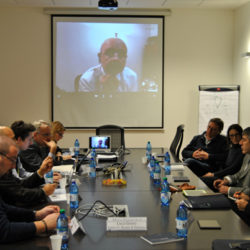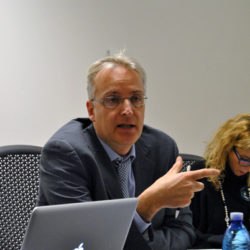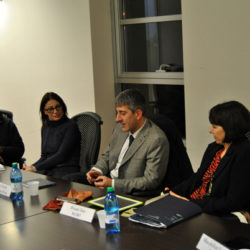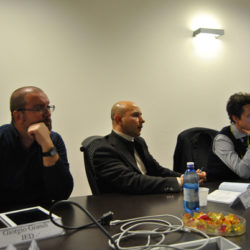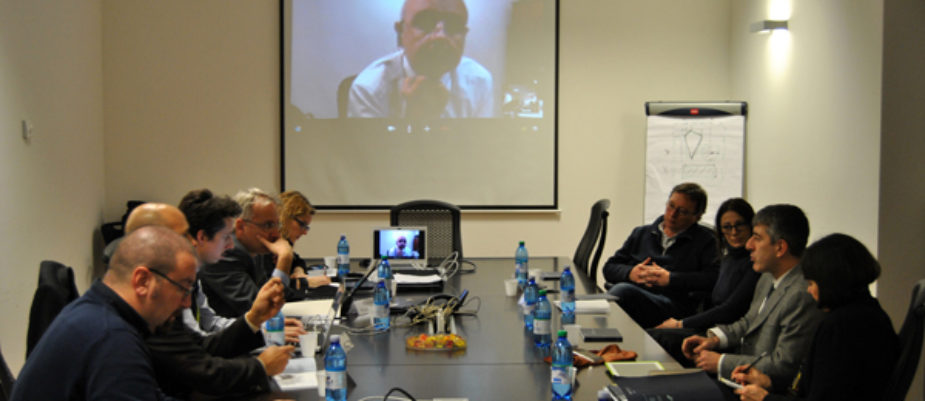
At Ingegneria Management Department of Politecnico Milan the second fluid and nomadic meeting on Smart Working.
The structure of the webmagazine WOW! is based on a nomadic, fluid and jelly editorial staff. Jelly is also the structure of the session that offer other subjects or stimuli.
The WOW! Jelly Session #2was attended by:
Daniele Andriolo (FM Siemens); Cristiana Cutrona (arch, Revalue); Mariano Corso (prof Politecnico Ingegneria Gestionale); Fiorella Crespi (researcher Politecnico Ingegneria Gestionale); Emanuele Marini (researcher Politecnico Ingegneria Gestionale); Silvio Petronella (arch, Dante O. Benini & Partners Architects); Giorgio Grandi (arch, teacher IED); Luigi Uboldi (Head Global Realty Services State Street Bank); Paolo Cerino via SKYPE from Rome (director CSR Sace); Renata Sias (editor WOW!); Maximilian Speciani (Web designer WOW!)
The meeting is opened by Mariano Corso, who sums up the results of the study Smart Working about the impact of ICT technologies on models of staff management and reorganization of the physical space and benefits for the employees in terms of profit and satisfaction.
In S W , virtual workspace means compatible with a different work style. The physical space counts, because it has a strong evocative power on behaviour and also because it ‘costs’ and should be rationalized. Yet, to redesign the environment means to redesign the rules, as well.
The managers attending the meeting confirm the attention paid to the cost of space. At present remote working, which is being gradually applied, involves 5 to 10% of employees and provides for a desk sharing in the office to guarantee ‘warp and weft’, traceability during working hours.
The theme ‘time-space’ is as much important and trade-union and contract aspects and the “cultural” problem often hamper the application of Smart Working models.
Work technology has always conditioned behaviour and it’s now clear that intellectual work produces values in an inconsistent way, and cannot be confined in time and space. The problem is that Personnel Managers have developed the Taylorist mentality of “buying people’s time”, a concept that doesn’t make sense any more. Another obstacle to the spreading of Smart Working is the management’s inability to plan by targets .
The designers are of the same opinion: only a flexible organization of work can allow a flexible use of space. However, sometimes it’s difficult to explain to the customer that space optimization doesn’t just mean to change the office into a “poultry pen”, but that different kinds of spaces and ancillary areas are absolutely necessary.
Then projects of Smart Working defined in Microsoft, related by Cristiana Cutrona di Revalue, Vodafone Village related by Silvio Petronella, Dante O. Benini & Partners Architects and Sace di Roma, the seventeenth-century building which Fontana di Trevi leans on, described by Paolo Cerino. Giorgio Grandi concludes with the case of IED that has thoroughly changed the relation between classrooms and corridors. Circulation areas are no longer Non-Places, but rest and work places with different islands.
By Renata Sias
Expound experiences and anecdotes on the smart working theme if you like.

